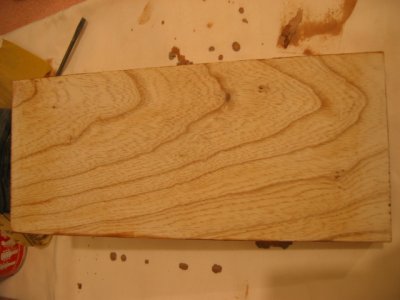Hello all....
I've been doing some grain filling on a scrap piece of swamp ash.....
I'm using the stewmac waterbased brown filler.....
CB, i've followed you're great instructions and feel confidant I am doing things correctly....BUT.....once I let the filler dry, 24 hours, and I then go to sand....do I want to sand so much that the brownish tint that is on the wood is being sanded off??
The grain is definitely darker, so I feel good about the pores getting filled....but, again, do I want to sand so much that I have the natural look of the wood back?
I hope that all made sense....
I applied a 3rd coat of filler this morning after sanding with 320 grit.....
The wood is feeling nice n smooth...I hope this is a sign of me doing something correctly!!
Thanks!!!
I've been doing some grain filling on a scrap piece of swamp ash.....
I'm using the stewmac waterbased brown filler.....
CB, i've followed you're great instructions and feel confidant I am doing things correctly....BUT.....once I let the filler dry, 24 hours, and I then go to sand....do I want to sand so much that the brownish tint that is on the wood is being sanded off??
The grain is definitely darker, so I feel good about the pores getting filled....but, again, do I want to sand so much that I have the natural look of the wood back?
I hope that all made sense....
I applied a 3rd coat of filler this morning after sanding with 320 grit.....
The wood is feeling nice n smooth...I hope this is a sign of me doing something correctly!!
Thanks!!!





